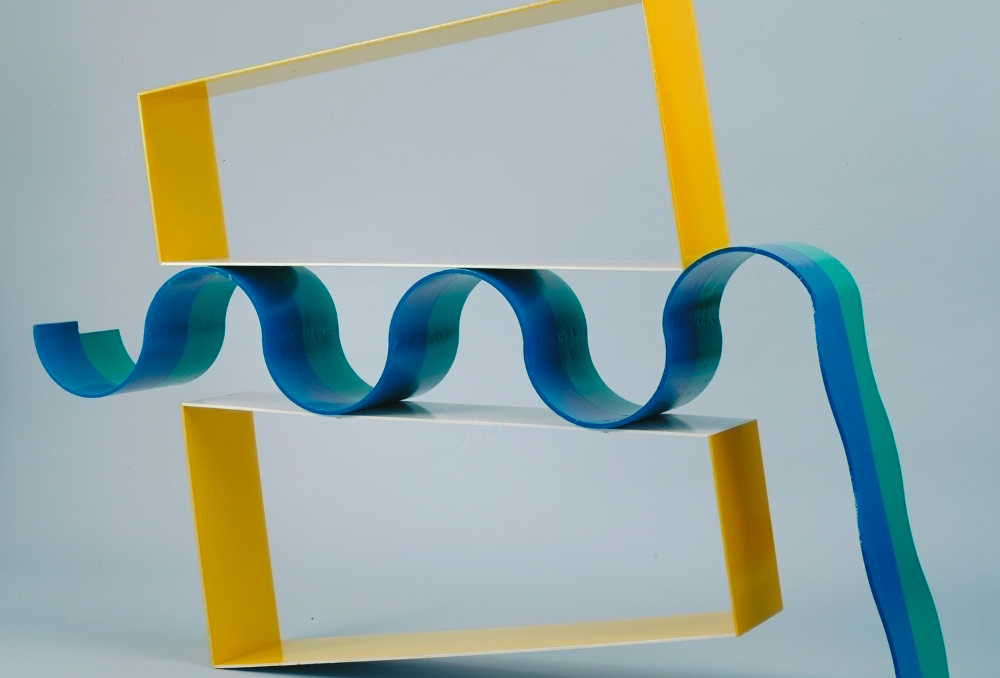
David Annesley
As PalaisPopulaire opens Objects of Wonder showing sculpture from across the Channel, curators Elena Crippa and Daniel Slater talk about the importance of objects.
For its second show since its opening last September, Deutsche Bank’s new art space puts exiting Britain centre stage, showcasing the British artists who have revolutionised contemporary sculpture since the 1930s: think the likes of postwar modernists Henry Moore and Barbara Hep- worth, iconic pieces by ‘bad girl of British art’ Tracey Emin, or young British stars such as Damien Hirst. We caught up with the two Tate curators behind the show.
Can you talk about your research and how the exhibition’s topic came about?
Elena Crippa: I’ve always been fascinated by the thin line between art and everyday objects in the work of many artists since Dada and Surrealism. The history of sculpture is often told as the history of the representation of the human figure, of statuary and its placement. This exhibition came from a desire to take a different trajectory and demonstrate how the renewal of modern and contemporary sculpture has been instigated by objects – as found, portable and often imbued with different meanings relating to their use, history, symbolism, material properties and tactile attributes.
What will be on display and how did you select the works representing British sculpture?
Daniel Slater: The exhibition includes 69 artworks by 53 artists, the earliest dating from 1934 – Henry Moore’s “Four-piece Compositions: Reclining Figures” – and the latest being Helen Marten’s 2014 “Guild of Pharmacists”. Important, influential, and celebrated artworks will be exhibited alongside equally influential but lesser-known pieces, thus offering a more comprehensive picture of artistic practice in Britain. Objects of Wonder is Tate’s most substantial exhibition of this nature to date. Visitors will find themselves in front of, around, and between dramatic sculptures, each challenging widely held ideas about the subjects and methods of traditional sculptural practice such as carving and casting, and the accurate representation of nature.
The majority of works displayed in the show belong to the Tate Collection. Can you tell us more about your curatorial practice there?
EC: Over many decades, Tate directors and curators have built an extraordinary collection. And there is a continual effort to rewrite art history – to research, acquire and display the work of artists whose significant contributions to British and international art and culture have not yet been fully recognised or adequately represented. In recent years we have acquired the work of many important female artists, as in the case of Rose Finn-Kelcey’s “The Magpie’s Box” from 1977, which is included in the exhibition.

Hepworth / Bowness
How are you addressing the influence of colonial history and Eurocentrism in the show?
EC: Three small but seminal works by Eileen Agar, Barbara Hepworth and Henry Moore from the 1930s to 1940s open the exhibition. They signal the importance of many strands of international developments in the history of British sculpture: from the found object of surrealism, to the constructed object of Russian constructivism and the many ritualistic objects seen at the British Museum, including pre-historic stone carvings and statuettes from ancient Egypt. These and other histories are evoked over and over again throughout this exhibition.
Do you have a personal favourite art piece in the show?
DS: Richard Wentworth’s 1985 “Yellow Eight”: it is both original and absurd, with a scale that is somehow very pleasing in spite of matching that of actual utilitarian buckets. The juxtaposition of galvanised steel alongside highly polished brass heightens the qualities of both materials. EC: If I had to chose one, it would be Phyllida Barlow’s “Untitled (Yellow Rack)”, 2006. I love the unapologetic and affirmative nature of the work; the way it confidently takes up space and asserts a material yet non-utilitarian engagement with the world.
How would you describe your show’s relevance in these Brexit times?
EC: Artists’ renewed engagement with materiality and thing-ness reflects a world in which we are struggling to define and distinguish truth from lies, a world in which we need concrete anchors. I hope the show will speak of a need to trust our bodies, to be responsive to our environment and the individuals we share it with; while remembering that we are not much without our imagination, our capacity to envisage new possible worlds beyond the socio-political conditions we inhabit.
Objects of Wonder: British Sculpture from the Tate Collection, 1950s – Present Through May 27 PalaisPopulaire, Mitte


